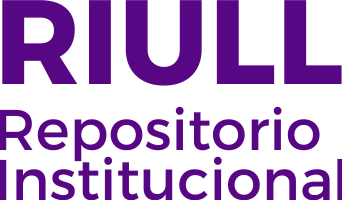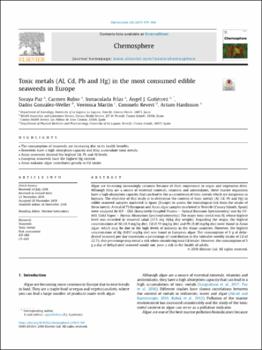Toxic metals (Al, Cd, Pb and Hg) in the most consumed edible seaweeds in Europe
Fecha
2019Resumen
Algae are becoming increasingly common because of their importance in vegan and vegetarian diets.
Although they are a source of essential minerals, vitamins and antioxidants, these marine organisms
have a high absorption capacity that can lead to the accumulation of toxic metals which are dangerous in humans. The objective of this study is to determine the content of toxic metals (Al, Cd, Pb and Hg) in edible seaweed samples marketed in Spain (Europe) to assess the toxicological risk from the intake of these metals. A total of 73 European and Asian algae samples marketed in Tenerife (Canary Islands, Spain) were analyzed by ICP - OES (Inductively Coupled Plasma e Optical Emission Spectrometry) and by CVAAS (Cold Vapor e Atomic Absorption Spectrophotometry). The major toxic metal was Al, whose highest level was recorded in seaweed salad (57.5 mg Al/kg dry weight). Regarding the origin, the highest
concentrations of Al (38.9 mg/kg dw), Cd (0.59 mg/kg dw) and Pb (0.40 mg/kg dw) were found in Asian algae, which may be due to the high levels of industry in the Asian countries. However, the highest
concentration of Hg (0.017 mg/kg dw) was found in European algae. The consumption of 5 g of dehydrated seaweed per day represents a percentage of contribution to the tolerable weekly intake of Cd of 22.7%, this percentage may entail a risk when considering total Cd intake. However, the consumption of 5 g a day of dehydrated seaweed would not, pose a risk to the health of adults.





